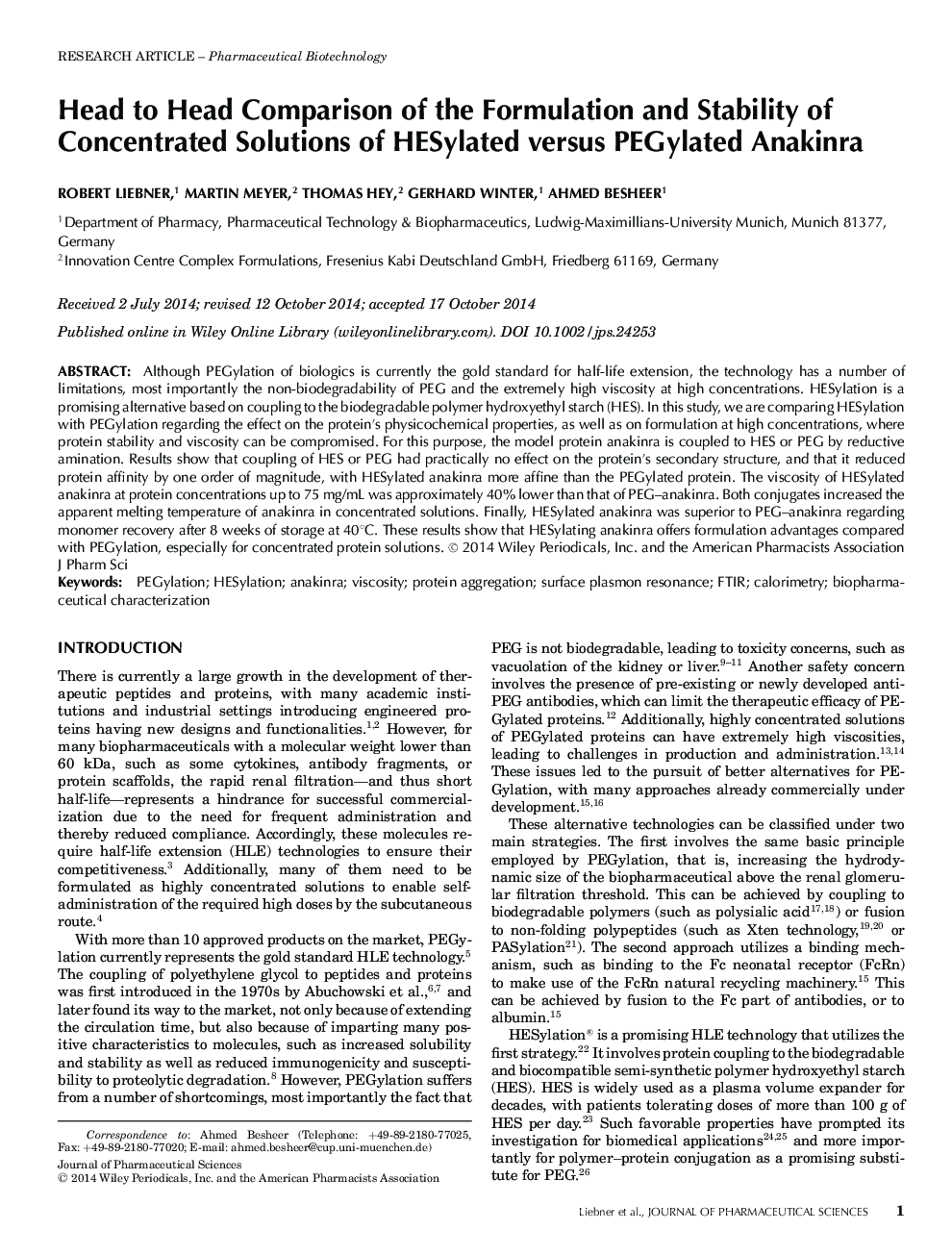| Article ID | Journal | Published Year | Pages | File Type |
|---|---|---|---|---|
| 10162174 | Journal of Pharmaceutical Sciences | 2015 | 12 Pages |
Abstract
Although PEGylation of biologics is currently the gold standard for half-life extension, the technology has a number of limitations, most importantly the non-biodegradability of PEG and the extremely high viscosity at high concentrations. HESylation is a promising alternative based on coupling to the biodegradable polymer hydroxyethyl starch (HES). In this study, we are comparing HESylation with PEGylation regarding the effect on the protein's physicochemical properties, as well as on formulation at high concentrations, where protein stability and viscosity can be compromised. For this purpose, the model protein anakinra is coupled to HES or PEG by reductive amination. Results show that coupling of HES or PEG had practically no effect on the protein's secondary structure, and that it reduced protein affinity by one order of magnitude, with HESylated anakinra more affine than the PEGylated protein. The viscosity of HESylated anakinra at protein concentrations up to 75 mg/mL was approximately 40% lower than that of PEG-anakinra. Both conjugates increased the apparent melting temperature of anakinra in concentrated solutions. Finally, HESylated anakinra was superior to PEG-anakinra regarding monomer recovery after 8 weeks of storage at 40°C. These results show that HESylating anakinra offers formulation advantages compared with PEGylation, especially for concentrated protein solutions. © 2014 Wiley Periodicals, Inc. and the American Pharmacists Association J Pharm Sci 104:515-526, 2015
Related Topics
Health Sciences
Pharmacology, Toxicology and Pharmaceutical Science
Drug Discovery
Authors
Robert Liebner, Martin Meyer, Thomas Hey, Gerhard Winter, Ahmed Besheer,
